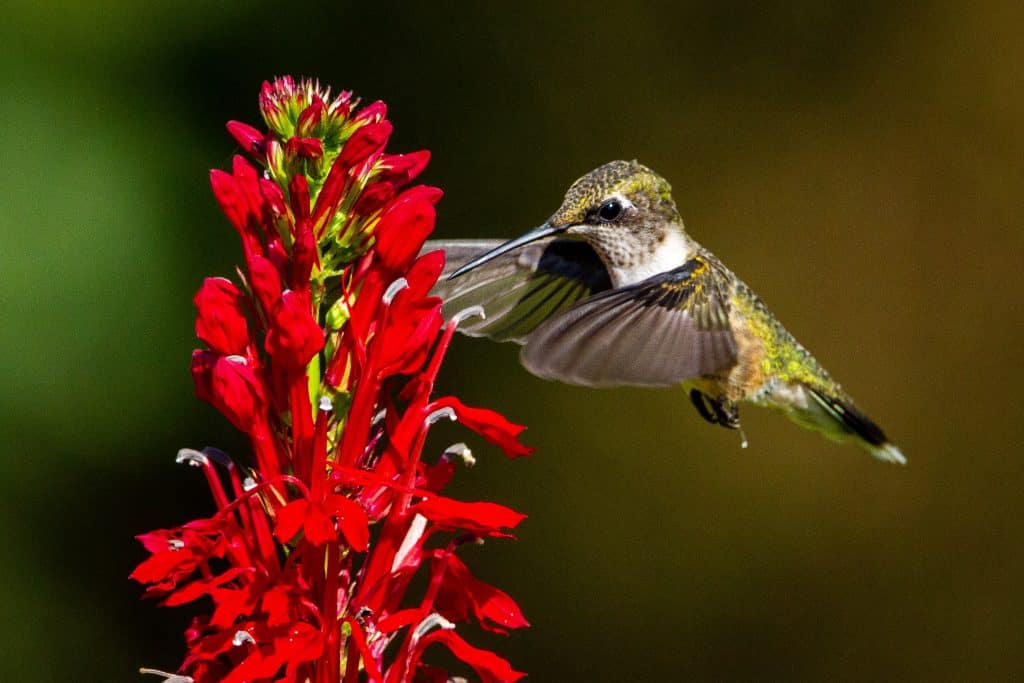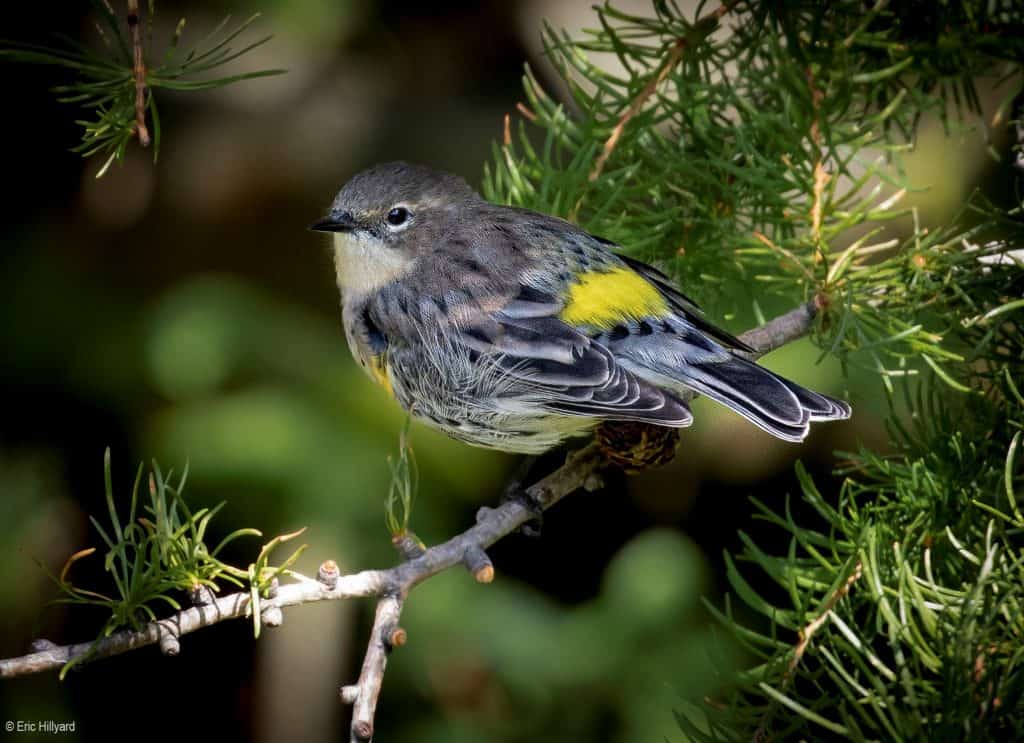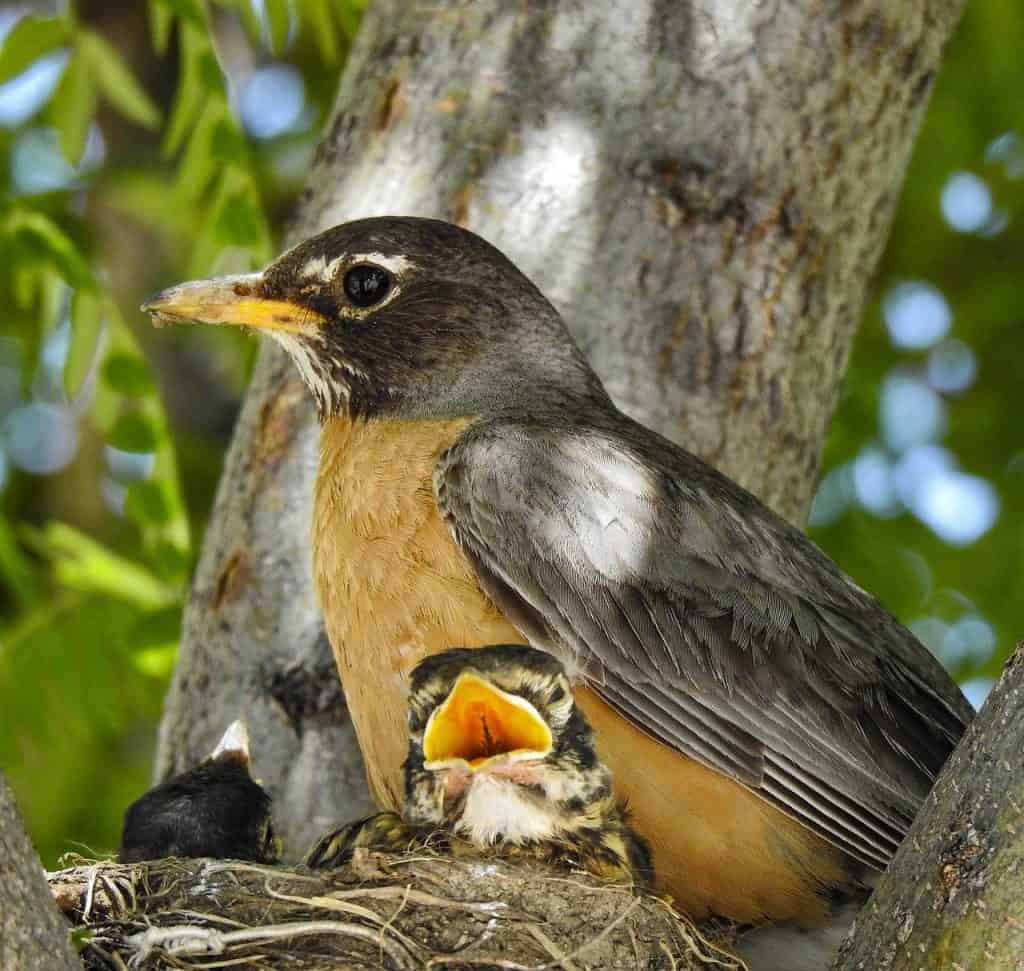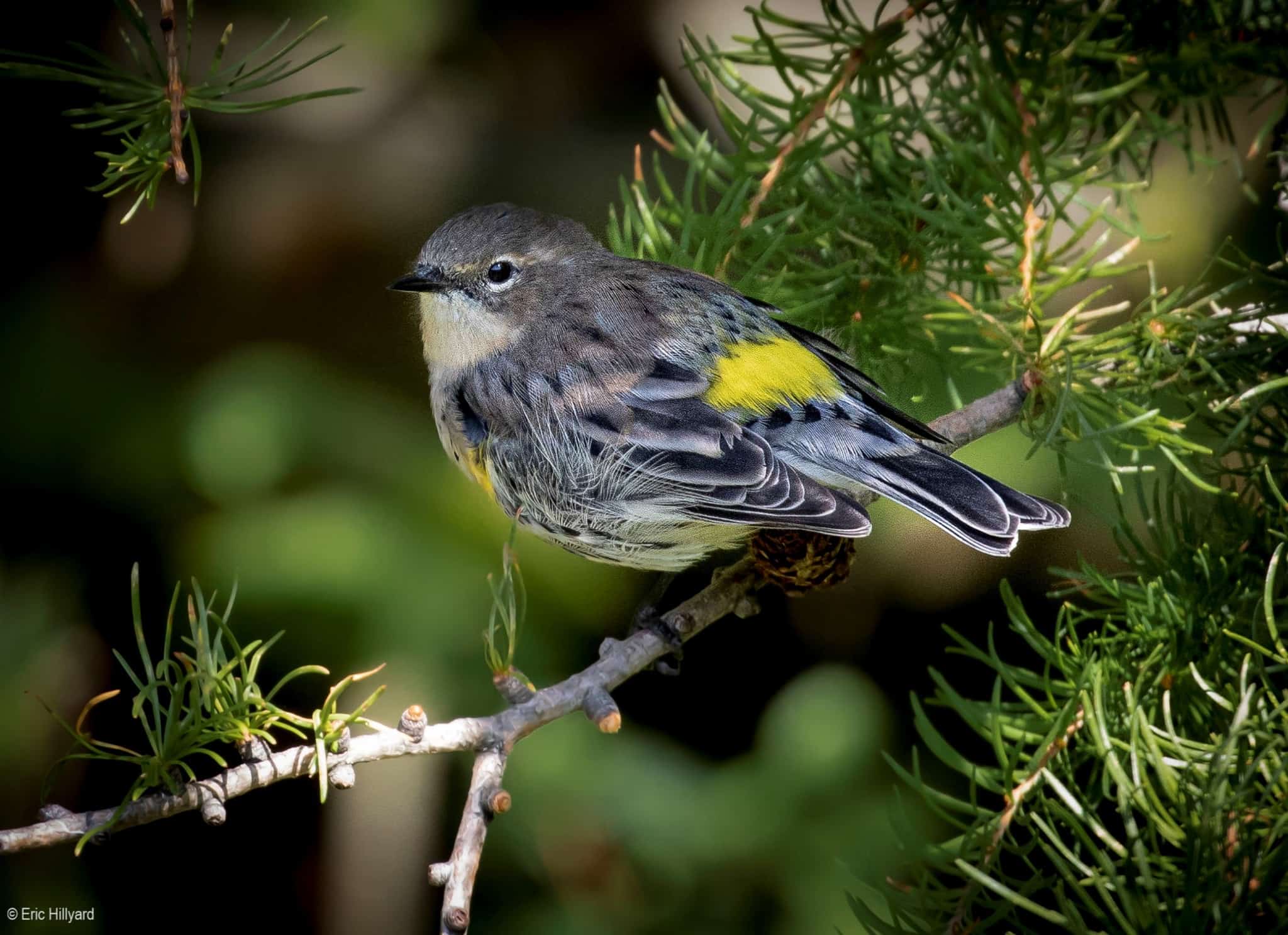It’s easy to attract birds without a feeder. The key is to think like a bird. What are they attracted to naturally? How can you make your yard a place where they can accomplish their two primary goals – to survive and reproduce?
I’ve been a backyard birder for more than 25 years. During that time I’ve attracted thousands of birds. I hang feeders for my feathered friends but also have taken other steps to make my yard inviting to birds.
Before we get to how to attract birds without a feeder I’d like to explore why someone would want to in the first place.
Also, I’ll share the primary goals of wild birds. I believe this understanding makes it much easier to create a yard that’s irresistible to birds so you can attract birds without a feeder.
Why Attract Birds Without a Feeder?
Some people want to attract birds without a feeder. Some reasons for this include:
- They believe that bird feeders attract mice, rats, or other rodents.
- They live in an area that doesn’t allow bird feeders (such as a homeowner association rule).
- They live among bears and don’t want the danger of attracting them near their home.
- They don’t want to deal with the maintenance of a feeder (cleaning & refilling).
- They don’t want to buy birdseed or other bird food.
Primary Goals of Wild Birds
Wild birds have two primary goals. To survive and reproduce. Bird behaviors are directly related to one or both of these goals.
For example, they choose a habitat that supports their ability to survive and reproduce. Such a habitat must have the food they eat, water for hydration & bathing, nesting locations, protection from predators, and extreme weather.
Another behavior is migration.
In the fall, some birds migrate to a different climate that’s better able to support survival. In the spring, some birds migrate to a different climate that’s better able to support reproduction.
Some birds remain in the same climate year-round because their species have adapted to survive there.
Survival
Survival requires food, water, shelter, and keeping out of sight from predators.
Reproduction
Reproduction entails pairing with a mate, establishing a secure nesting area, and feeding & raising the young. These activities are dependent on a territory abundant with food & water and may also require high areas for birds to perch and sing to attract a mate.
Attract Birds with Plants
In order for your yard to support birds’ primary goals of survival and reproduction, it must be abundant in food, water, shelter, nesting locations & materials. Can you think of something that offers all these things (well, except for water)? Plants!
Plants are crucial for birds’ survival and reproduction. In the wild, they rely on plants for food, shelter, and nesting/reproduction. You can plant plants in your yard to attract birds.
Plants Provide Birds with Food

Plants provide natural food for wild birds. They consume nectar, seeds, fruit & berries, nuts, and insects.
- Flowers produce nectar;
- Grasses & flowers produce seeds;
- Trees & vines produce fruits;
- Trees produce nuts;
- All plants attract insects.
Plants Provide Birds with Shelter

Shrubs and trees provide birds with much-needed shelter. When they’re nestled inside a dense shrub they’re able to hide from predators, escape extreme weather, or just rest.
Plants Support Birds’ Reproduction Needs

Shrubs and trees offer branches and dense foliage for birds to build their nests in and help protect the eggs and babies from other birds or wildlife.
Flowers, shrubs, and trees produce food that can be used to nourish the female while she incubates the eggs and later feeds the young. These plants also attract insects that are a key part of many young wild birds’ diets.
Birds are naturally drawn to nature’s offerings of flowers, grasses, vines, shrubs, and trees because they provide the elements they need to survive and reproduce.
You can incorporate plants in your yard to attract birds naturally. No feeder is required.
Native Plants are the Best
What are native plants? According to The Audubon Society, native plants occur naturally in the region in which they evolved.
Native plants are the best for you and the birds. Here’s why:
- Native plants are easier to grow because they’ve adapted to the climate conditions.
- Native plants are preferred by birds and their systems are well adapted to digesting and utilizing native plants’ nutrients.
The next several sections provide excellent native plant choices to attract birds. The last column of each table How it Helps Birds details the survival or reproduction element the plant offers.
For example, Blue False Indigo plants provide nectar. Since hummingbirds love nectar, you’re likely to attract hummers with this plant.
Best Flowers to Attract Birds
| Common Name | Scientific Name | How it Helps Birds |
|---|---|---|
| Aster, New England | Aster novae-angliae | Insects |
| Aster, Sky Blue | Aster azureus | Insects |
| Aster, Smooth | Aster laevis | Insects |
| Bergamot (Bee balm) | Monarda fistulosa | Nectar |
| Black Eyed Susan, Wweet | Rudbeckia subtomentosa | Seeds |
| Blazing star, dense | Liatris spicata | Nectar, Seeds |
| Indigo, Blue False | Baptisia australis | Nectar |
| Butterfly Weed | Asclepias tuberosa | Nectar, Insects |
| Columbine | Aquilegia spp. | Nectar |
| Coneflower, pale purple | Echinacea pallida | Insects, Seeds, Nectar |
| Coneflower, purple | Echinacea purpurea | Insects, Seeds |
| Coneflower, Yellow | Ratibida pinnata | Insects, Seeds |
| Cupplant | Silphium perfoliatum | Shelter, Water, Seeds, Insects, Nectar |
| Goldenrod, Stiff | Solidago rigida | Seeds, Nectar |
| Milkweed, Common | Asclepias syriaca | Insects |
| Milkweed, Sullivant’s | Asclepias sullivantii | Insects |
| Milkweed, Red | Asclepias incarnata | Insects |
| Penstemon, Smooth | Penstemon digitalis | Nectar |
| Phlox, Downy | Phlox pilosa | Nectar |
| White Doll’s Eyes (Baneberry, White) | Actaea pachypoda | Berries |
| Baneberry, Red | Actaea rubra | Berries |
| Indigo, Yellow Wild | Baptisia tinctoria | Seeds, Insects, Nectar |
| Blue Cohosh | Caulophyllum thalictroides | Berries |
Grasses to Attract Birds
| Common Name | Scientific Name | How it Helps Birds |
|---|---|---|
| Indiangrass | Sorghastrum nutans | Nest Material |
| Bluestem, Big | Andropogon gerardii | Nest Material, Shelter, blue |
| Bluestem, Little | Schizachyrium scoparium | Nest Material |
| Prairie Dropseed | Sporobolus heterolepis | Seeds, Nuts, Berries, Nest Material |
| Sideoats Grama | Bouteloua curtipendula | Seeds, Insects |
| Bur Sedge | Carex grayi | Seeds, Nest Material |
Vines to Attract Birds
| Common Name | Scientific Name | How it Helps Birds |
|---|---|---|
| Clematis | Clematis spp. | Shelter |
| Poison Ivy | Rhus radicans | Berries, Shelter |
| Trumpet Creeper (Trumpet Vine) | Campsis radicans | Nectar |
| Virginia Creeper | Parthenocissus quinquefolia | Berries, Shelter, Fruit, Insects |
| Wild Grape | Vitis spp. | Fruit, Shelter |
Shrubs to Attract Birds
| Common Name | Scientific Name | How it Helps Birds |
|---|---|---|
| Bayberry, Northern | Myrica pensylvanica | Fruit, Berries, Shelter |
| Blackberry | Rubus fruticosus | Berries |
| Chokeberry | Berries | |
| Cotoneaster | Berries | |
| Dogwood | Cornus spp. | Berries, Insects, Shelter |
| Dogwood, Pagoda | Cornus alternifolia | Berries, Insects, Shelter |
| Dogwood, Red Twig | Cornus sericea | Berries, Shelter |
| Elderberry | Sambucus canadensis | Berries |
| Firebush | ||
| Great Basin sagebrush | Artemisia tridentata | Shelter, Insects |
| Hackberry | Berries | |
| Hazelnut | Corylus spp. | Nuts, Insects, Berries |
| Highbush Blueberry | Berries | |
| Highbush Cranberry | Berries | |
| Holly, American | Ilex opaca | Berries, Shelter |
| Mistletoe | Berries | |
| Mulberry | Morus spp | Berries |
| Nannyberry, Arrowood | Viburnum | Berries, Shelter, Nest Location |
| Plum | Prunus spp. | Berries, Insects |
| Prickly pear | Opuntia spp. | Shelter |
| Raspberry | Berries | |
| Saw palmetto | Serenoa repens | Shelter |
| Serviceberry | Amelanchier spp. | Shelter, Nest Location, Berries, Insects |
| Shadebush | Shelter, Nest Location | |
| Snowberry | Shelter, Nest Location, Berries | |
| Staghorn sumac | Rhus typhina | Berries |
| Sumac | Rhus spp | Berries, Insects, Shelter |
| Viburnum | Viburnum spp. | Berries |
| Viburnum, Blackhaw | Viburnum prunifolium | Berries |
| Winterberry (Holly) | Ilex verticillata | Berries, Shelter |
| Witch-Hazel | Hamamelis | Nuts, Insects, Fruit |
| Yew | Shelter | |
| Buttonbush | Cephalanthus occidentalis | Nectar, Seeds |
Trees (Deciduous) to Attract Birds
| Common Name | Scientific Name | How it Helps Birds |
|---|---|---|
| Beech, American | Fagus grandifolia | Nuts, Shelter |
| Ash, Mountain | Sorbus americana | Berries, Insects |
| Basswood | Tilia spp. | Nuts, Berries, Insects, Shelter |
| Beech | Fagus spp. | Berries, Insects, Nuts |
| Birch | Betula spp | Shelter, Insects, Seeds |
| Cedar | Cedrus spp. | Seeds, Shelter, Nest Location |
| Cherry | Prunus spp | Fruit, Insects, Shelter |
| Crab Apple | Malus spp. | Shelter, Fruit |
| Dogwood, Pacific | Cornus nuttallii | Shelter |
| Elm | Ulmus spp. | Berries, Nuts, Insects, Shelter |
| Fir | Abies spp | Shelter, Nest Location, Seeds |
| Hawthorn | Berries | |
| Hickory | Carya spp | Insects, Shelter, Nuts, Nest Location |
| Hornbeam | Carpinus spp. | Nuts, Berries, Insects |
| Juniper, Califonira | Juniperus californica | Shelter, Fruit |
| Larch | Larix spp. | Insects, Seeds, Shelter |
| Maple | Acer spp. | Insects, Seeds |
| Oak, white | Quercus ba | Nuts, Insects, Cavity, Shelter |
| Pacific madrone | Arbutus menziesii | Shelter, Fruit |
| Sycamore | Platanus spp. | Nuts, Shelter, Insects |
Trees (Coniferous) to Attract Birds
| Common Name | Scientific Name | How it Helps birds |
|---|---|---|
| Cedar, Red (Eastern) | Juniperus virginiana | Shelter, Nest Location |
| Hemlock | Tsuga | Shelter, Seeds, Nest Location |
| Juniper | Juniperus spp | Shelter, Seeds, Nest Location |
| Pine | Pinus spp | Shelter, Nest Location, Insects, Seeds |
| Spruce | Abies spp | Shelter, Nest Location, Seeds |
conclusion
You can attract birds without a feeder by incorporating a variety of plants in your yard. Plants that feed, shelter, and support bird families in the wild can do the same near your home.
There’s no denying birds depend on plants for survival and reproduction. Plants produce seeds, nectar, nuts, & fruits and attract insects that birds eat.
Plants also provide shelter for birds when the weather is extreme or a place to hide when a hawk is circling overhead.
Trees and shrubs provide strong branches to hold bird nests so parents can incubate their eggs until they hatch. This plant is home for several weeks until the last baby fledges and faces the world on his own.
Plant some native plants so wild birds can call your yard their home.
Happy Birding!


